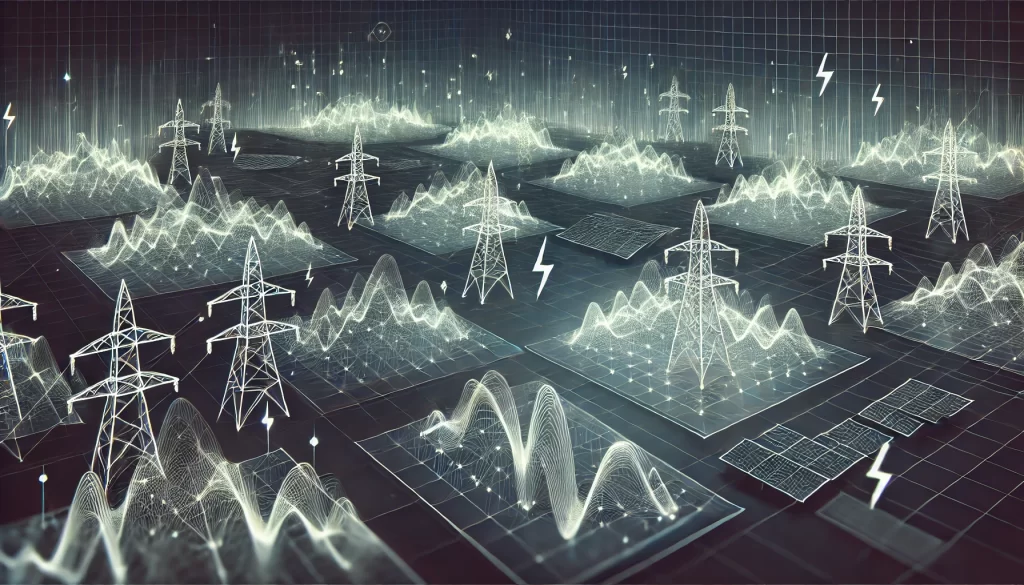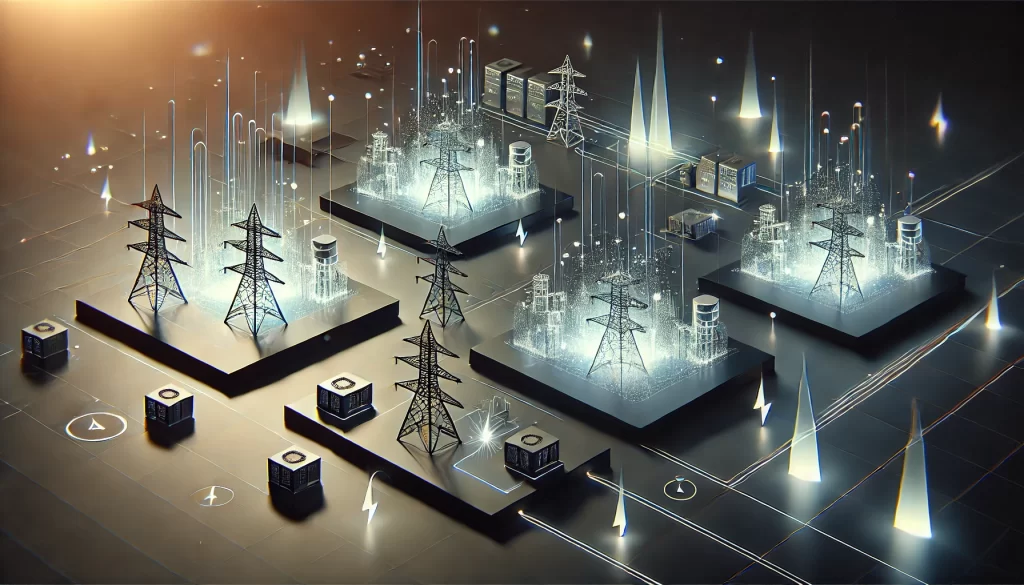The Hidden Cost of AI – What the World Isn’t Talking About
Artificial Intelligence has evolved from a buzzword to the backbone of almost every industry imaginable. Large language models (LLMs) like GPT-4 and LLaMA 3 aren't just advancing the boundaries of what machines can do; they're reshaping our reality. These models write essays, craft code, and answer questions with mind-bending accuracy. Sounds great, right?
Well, not quite. Behind the sleek, innovative façade of these tech marvels lies a growing problem that nobody’s talking about—AI’s voracious appetite for energy. You might have heard that AI requires lots of data, but did you know it also guzzles electricity like a thirsty athlete after a marathon?
In fact, training GPT-4 alone consumed as much electricity as 4,150 U.S. households in a year. Let that sink in for a moment. Your friendly AI chatbot may seem harmless, but its creation came with an electricity bill the size of a small town.
Now, think of what happens when hundreds of these models are trained simultaneously across the world’s data centers. We’re looking at a potential power grid meltdown, the likes of which we’ve never seen before. As this technology continues to grow, the implications for energy consumption—and the environment—are staggering.
The Hidden Threat to Our Power Grids
The global surge in AI usage is creating unprecedented pressure on power infrastructures. As AI models become more advanced, they also become more power-hungry, capable of spiking electrical loads in mere seconds. If we don’t act now, AI could disrupt not just tech innovation but the very grids that power our homes.
Welcome to the brave new world of AI-induced power surges—an invisible force that, unless checked, could wreak havoc on our fragile power grids. The future of artificial intelligence may seem bright, but it's casting some long shadows that need addressing, fast.

The Explosive Growth of AI Power Consumption: When Machines Eat Energy for Breakfast
We live in a world where the phrase "AI is the future" is no longer a futuristic statement—it’s reality. Every 10 months, the computing power required to train AI doubles, and that growth is showing no signs of slowing down. In 2022 alone, global data centers consumed 460 terawatt-hours of electricity—2% of the world’s energy consumption—and guess what? That number is increasing at an alarming rate. As AI continues to scale, we’re heading toward an energy crisis fueled by innovation.
AI: The Hungry Beast You Can’t Satiate
Think of AI as a ravenous beast, growing larger with every bite it takes. Every time a new version of GPT, LLaMA, or BERT is released, it requires more compute, more data, and yes—more energy. The costs are enormous, and not just financially. Training these models requires massive data centers, some consuming megawatts, even gigawatts, of power. That’s enough to power entire cities.
To give you a clearer picture, training GPT-3 used around 1.2 megawatt-hours, but training GPT-4 skyrocketed to 50 gigawatt-hours. That’s like leaving your kitchen light on non-stop for several millennia. And it's not just the training; AI models continue to draw huge amounts of power during their deployment in inference tasks, making them a 24/7 drain on electricity grids worldwide.
The Ticking Time Bomb: AI's Impact on Power Grids
We’ve seen the meteoric rise of tech giants like OpenAI, Google, and Meta, pouring billions into developing even bigger, faster, and more capable AI models. But there’s a ticking time bomb beneath all this innovation: AI-induced transients—the power surges and dips caused by LLM training sessions.
These surges can last mere seconds, but they wreak havoc on electrical grids designed to handle far more stable, predictable loads. Imagine trying to power an entire data center, only to have its demand shoot from 0 to 60 megawatts in seconds. It’s like flooring a Ferrari and expecting the engine to stay intact—it just doesn’t work that way.
Fear, Responsibility, and the Future of AI
It’s easy to marvel at the strides AI has made, but it’s time we face the darker truth: AI's hunger for power is unsustainable. What happens when your favorite AI assistant comes at the cost of rolling blackouts? What happens when AI starts to literally outstrip the world’s ability to generate electricity?
We’re not just facing an energy problem; we’re staring down the barrel of an existential crisis for technological progress. If we can’t manage AI’s power demands, the very future of innovation is at stake.

The AI Energy Boom: Why It’s Bigger Than You Think
Artificial Intelligence isn't just a technological marvel; it's an economic powerhouse. With tech giants like Google, Meta, and OpenAI investing billions in building AI-powered data centers, the industry is on track to dominate the next decade. But there’s a dark side to this boom that most people are unaware of: the vast, hidden costs of running these systems.
If you're still marveling at how your AI chatbot can hold a conversation or how it helps generate your weekend getaway plan, consider this: Schneider Electric estimates that AI-related power consumption could grow by 33% annually, reaching between 14 GW to 18.7 GW by 2028. For context, that’s nearly the same energy consumption as the entire city of New York.
But it's not just about how much energy AI uses—it's about how it uses it. AI models, especially during training, place immense strain on power grids by suddenly demanding huge amounts of electricity. These surges are unpredictable and happen faster than grid operators can respond, creating potential instability in electrical systems across the world.
The Unseen Strain: AI and Power Grid Transients
Power grids were never designed to handle the erratic power demands AI places on them. Traditional power usage is relatively predictable—houses, offices, and factories consume electricity at more or less steady rates. But AI? It’s the wild card. One moment, a data center is idling; the next, it’s ramping up to consume megawatts of electricity in the blink of an eye.
Let’s break it down. When training large models like GPT-4 or Meta’s LLaMA, AI systems can shift from a near-idle state to drawing tens of megawatts of power in mere seconds. And this isn't a one-off event—it happens every time the model needs to process data during training. These AI-induced transients create surges in demand that existing power grids aren't built to handle.
Imagine a highway with regular traffic flow. Now picture a sudden influx of a thousand semi-trucks merging at once, causing traffic jams and accidents. That’s the kind of disruption AI can bring to power grids—unforeseen and dangerous spikes in energy consumption that lead to blackouts or power dips, threatening grid stability.
This phenomenon, highlighted in the latest research from Yuzhuo Li and colleagues at the University of Alberta, points out that we’re facing a new, complex kind of challenge. Without major updates to grid management strategies and infrastructure, AI could push our energy systems to the brink of collapse. And with the world's growing reliance on these technologies, the stakes have never been higher.
For a detailed dive into these findings, check out the full study here.
Power Grid Crisis: Why AI’s Power Consumption Is a Global Threat
You might be asking, “Why should I care if AI is using more energy? Isn’t that a tech problem?” Well, think again. The implications of unchecked AI energy consumption are global, and they’re coming to a power grid near you.
AI and the Climate Crisis
We’re in the midst of a climate crisis, and one of the biggest culprits is energy consumption. AI is accelerating this by drawing massive amounts of electricity, much of which comes from fossil fuels. While many data centers aim to use renewable energy, the reality is that the bulk of global energy production still relies on coal, natural gas, and oil.
Training GPT-4, for example, used about 50 GWh of electricity, the equivalent of 0.02% of California’s total annual consumption. Now multiply that by hundreds of models being trained around the world. The cumulative carbon footprint is staggering.
In fact, a recent study published in Nature revealed that the carbon emissions from AI systems are soaring, and with no clear end in sight. If we continue on this path, AI could end up becoming one of the most significant contributors to global warming—a bitter irony for an industry that prides itself on innovation and forward-thinking solutions.
The Energy Inequality Paradox
AI doesn’t just consume a lot of energy—it consumes it in specific places. Most large AI data centers are located in developed countries with robust infrastructure and access to vast amounts of energy. But what happens to regions that can’t keep up?
This creates a paradox of energy inequality. As AI systems become more ubiquitous, the strain they place on energy grids will disproportionately affect developing countries. Countries without advanced infrastructure may face more frequent blackouts and power disruptions, while wealthier nations funnel billions into maintaining the grid stability required to support these systems.
The end result? Global inequality—a world where only the richest countries can sustain their AI-driven economies, leaving others in the dust.

Solving AI’s Energy Crisis: Is There a Way Out?
If AI is such an energy hog, why not just stop building it? Well, that’s not an option. AI isn’t going away—it’s here to stay. It’s revolutionizing healthcare, education, and nearly every other industry. The solution lies not in halting AI’s progress but in revolutionizing how we power it.
AI Models Need a Diet—Enter Optimized Compute
The current approach to making AI smarter has been brute force scaling. Companies like OpenAI and Google have thrown ever-increasing compute power at models like GPT-4, LLaMA, and Claude. But this approach is hitting a wall—scaling models up any further requires more compute than the planet can afford.
Enter optimized compute—an emerging field of research that seeks to make AI models more efficient, not just bigger. The idea is simple: instead of scaling models by adding more parameters, let’s make models that can think smarter during inference (the point when the model is used in real-time to generate answers or perform tasks).
For example, instead of brute-force calculations, an AI model could be trained to think more selectively—much like how a chess player strategizes several moves ahead without calculating every possible outcome. This kind of optimized compute could drastically reduce the power needs of AI, making it both cheaper and greener to operate.
DeepMind is leading this effort, looking into ways to improve the efficiency of AI models without sacrificing performance. Their findings suggest that we could see up to 80% reductions in energy consumption by optimizing AI's use of computational resources.
The Future of AI and Power: Will We Adapt in Time?
The relationship between AI and power consumption is one of the most critical challenges we face in the 21st century. If we continue down this path of unchecked energy consumption, we risk catastrophic failures in our power infrastructure—failures that could halt progress, destabilize economies, and worsen climate change. But if we act now, there’s still hope.
The future lies in smart grids, renewable energy sources, and optimized AI models. By investing in these areas, we can ensure that AI continues to transform our world—without destroying it in the process.
AI has the potential to be our greatest ally in the fight against climate change, inequality, and energy inefficiency—but only if we harness it responsibly.
Join the Debate: Where Do You Stand?
We want to hear from you! What do you think about the future of AI and its energy consumption? Is the technology worth the environmental costs? Should companies be held accountable for their energy usage, or is this the price we pay for progress?
Join the conversation in the comments below, and don’t forget to become a part of the iNthacity community. Apply to become a permanent resident or citizen of the "Shining City on the Web". Together, we can shape the future of AI and its impact on the world.
FAQs
How much energy does training AI consume?
Training large models like GPT-4 can use as much electricity as thousands of households. The training of GPT-4 alone consumed 50 GWh—a massive energy footprint.
What are AI-induced power grid transients?
These are sudden, unpredictable surges or dips in electricity demand caused by AI models, which can destabilize power grids.
How does AI contribute to climate change?
AI's growing power consumption, much of which comes from fossil fuels, significantly increases carbon emissions, contributing to global warming.
Can AI become more energy-efficient?
Yes! Research into optimized compute, such as DeepMind’s initiatives, aims to make AI models smarter without requiring more energy.
What’s the solution to AI’s energy crisis?
We need a mix of smarter AI models, optimized power consumption strategies, and investment in renewable energy.
Will AI-driven power demands lead to blackouts?
In some regions, especially those with weaker infrastructure, AI’s energy demands could lead to increased power outages.
Is AI worth the energy costs?
AI has immense benefits, but balancing its advantages with environmental sustainability is crucial. Optimized models and renewable energy could make it worth the trade-off.
How do AI data centers impact developing countries?
Developing countries may struggle to manage the power demands of AI, leading to energy inequality between wealthier and poorer regions.
What role can renewable energy play in AI?
Renewables like solar and wind can power AI data centers, reducing their carbon footprint and making them more sustainable.
Is there a way for individuals to contribute to solving this crisis?
Supporting renewable energy, advocating for smarter AI technologies, and staying informed about AI’s environmental impact are all steps individuals can take.
Disclaimer: This article may contain affiliate links. If you click on these links and make a purchase, we may receive a commission at no additional cost to you. Our recommendations and reviews are always independent and objective, aiming to provide you with the best information and resources.
Get Exclusive Stories, Photos, Art & Offers - Subscribe Today!
























Post Comment
You must be logged in to post a comment.